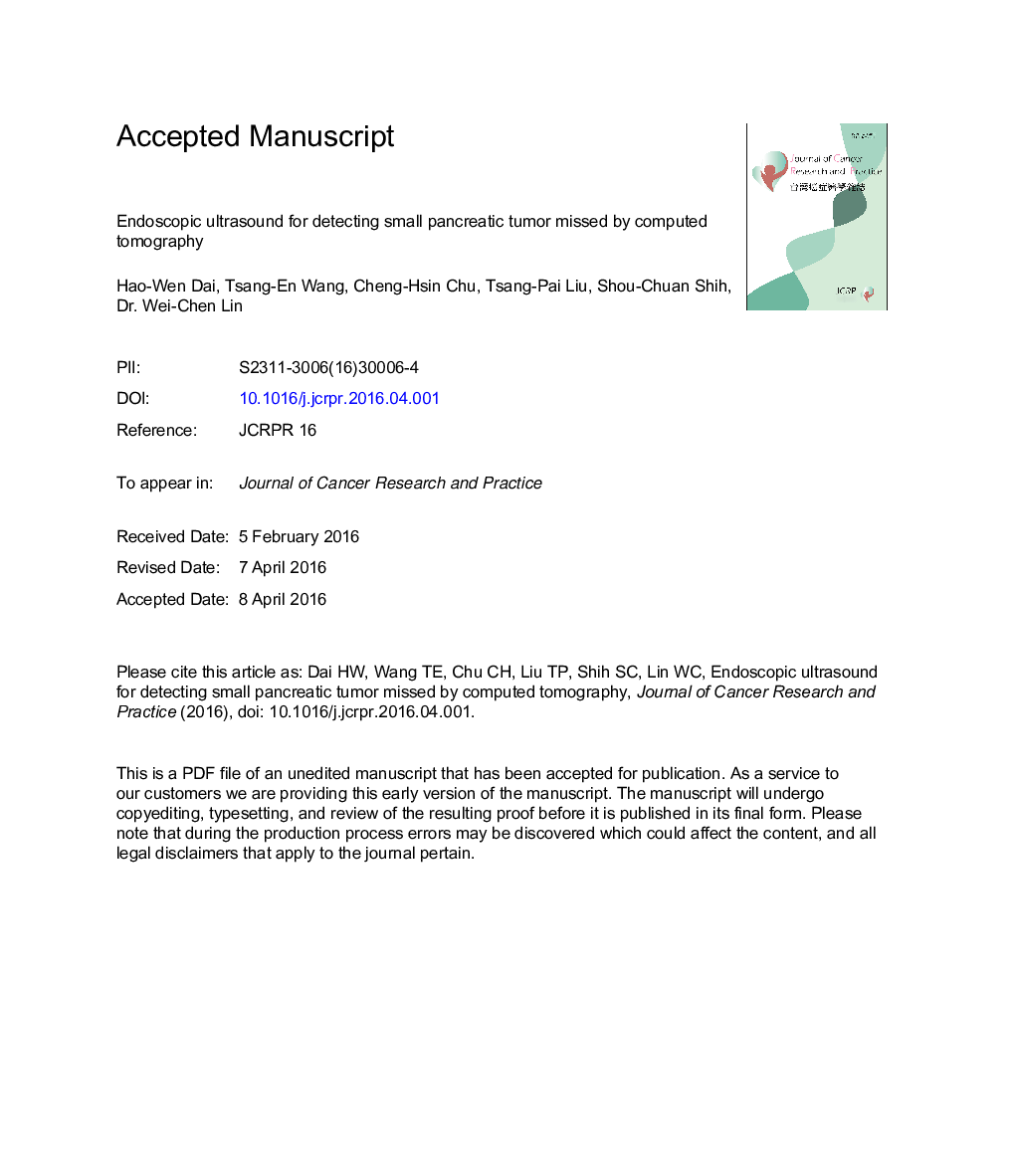| Article ID | Journal | Published Year | Pages | File Type |
|---|---|---|---|---|
| 8787446 | Journal of Cancer Research and Practice | 2016 | 19 Pages |
Abstract
Pancreatic cancer is the eighth leading cause of cancer-related deaths in Taiwan. Pancreatic cancer has a poor prognosis. Diagnosis of early-stage pancreatic cancer, which can be defined based on resectability, size, or curability, will improve survival. Diagnostic tools for pancreatic cancer include transabdominal ultrasonography, computed tomography (CT), magnetic resonance imaging (MRI), endoscopic retrograde cholangiopancreatography (ERCP), and endoscopic ultrasound (EUS). We report the case of a 48-year-old man who presented with progressively yellowing skin. An CT imaging study did not reveal the pancreatic lesion. Further imaging with EUS was performed to search for the organic lesion causing an abrupt distal common bile duct stricture, and a heterogeneous hypoechoic tumor located at the uncinate process was identified. The patient underwent a Whipple operation because malignancy could not be ruled out. The final pathological result was moderate to poorly differentiated adenocarcinoma.
Related Topics
Health Sciences
Medicine and Dentistry
Oncology
Authors
Hao-Wen Dai, Tsang-En Wang, Cheng-Hsin Chu, Tsang-Pai Liu, Shou-Chuan Shih, Wei-Chen Lin,
